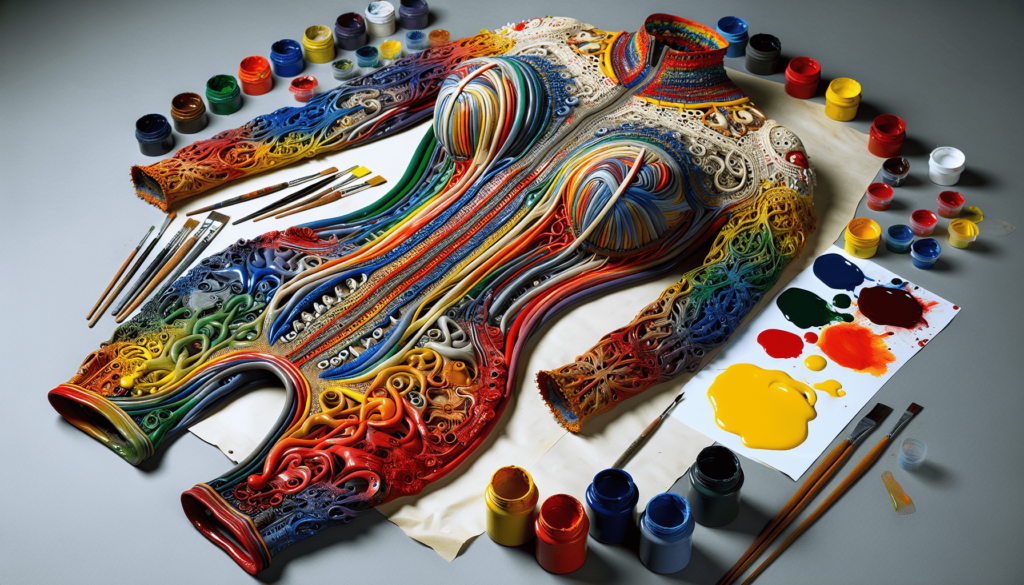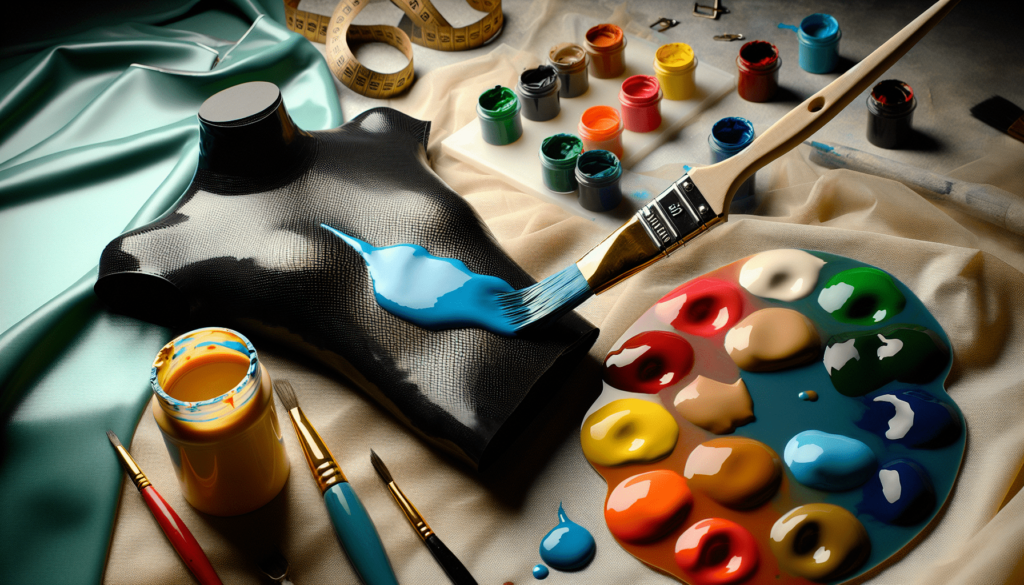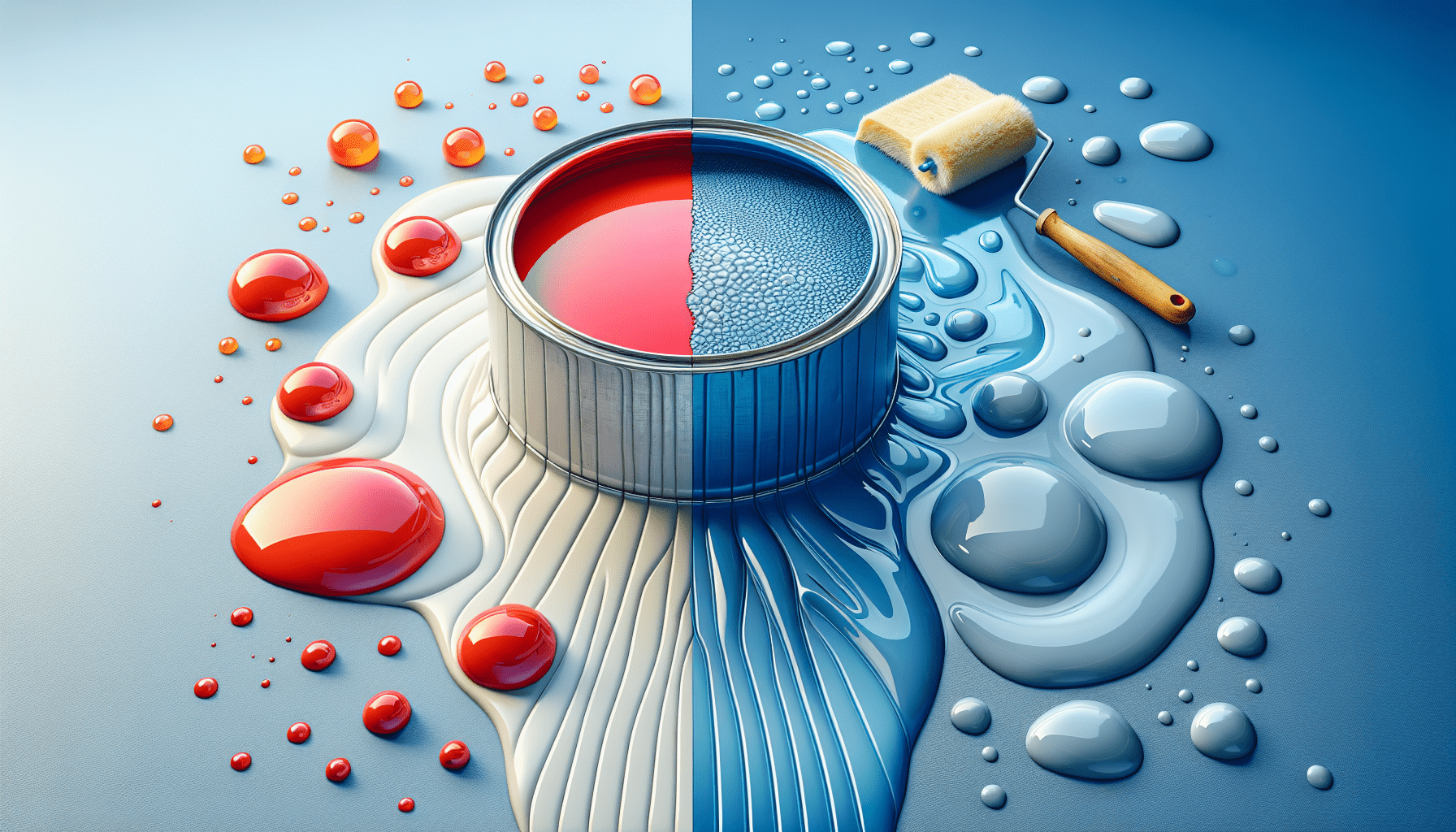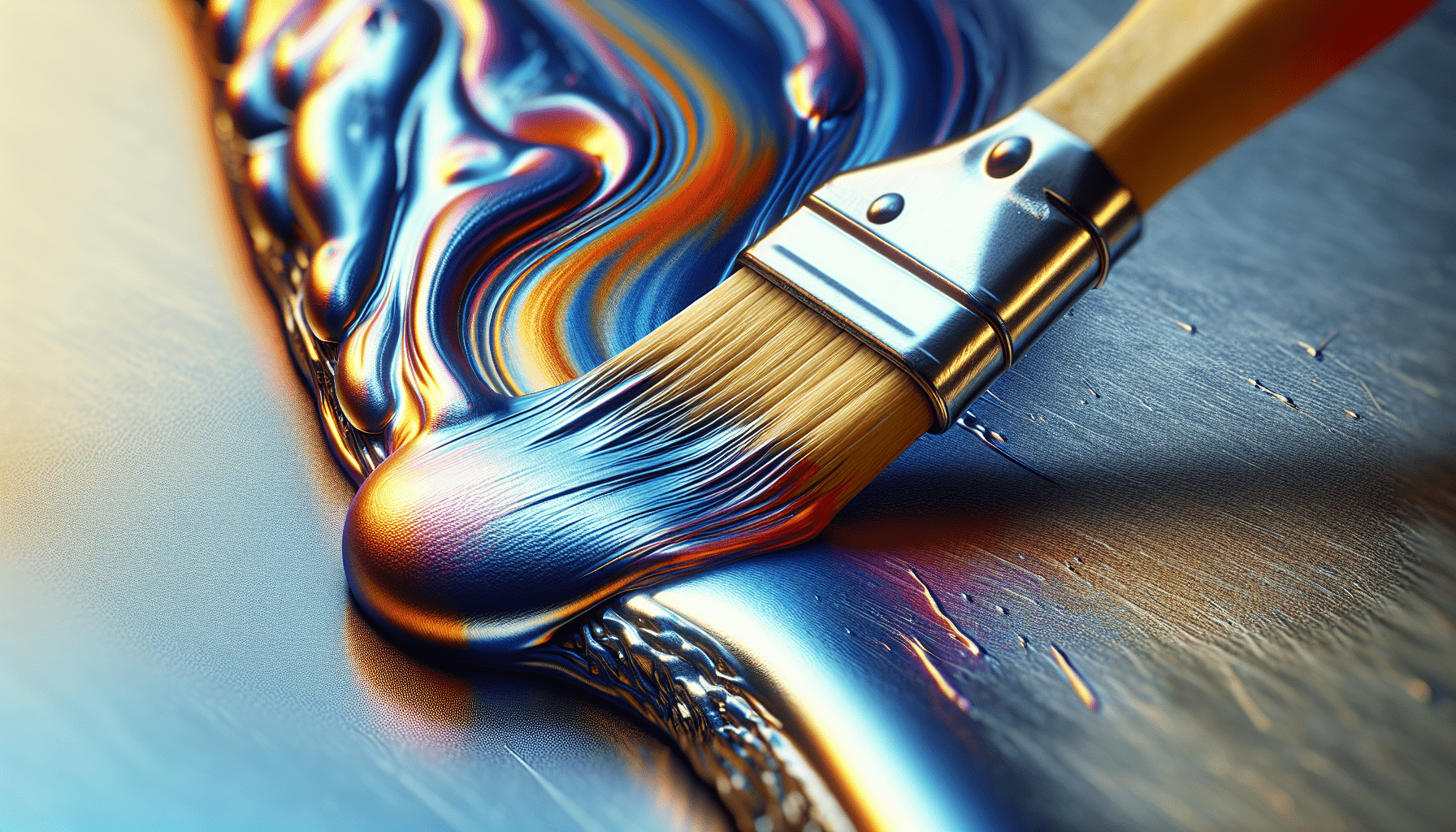In this article, you will discover an informative guide on how to effectively paint latex rubber. Whether you are a professional artist or simply looking to revamp a latex rubber object, understanding the correct techniques and materials for painting latex is crucial. By following these step-by-step instructions, you will be able to achieve a flawless and long-lasting paint finish on your latex rubber items, enhancing their aesthetic appeal and durability. Take your painting skills to the next level with our comprehensive guide on how to paint latex rubber.
Preparation
Clean the Surface
Before you begin any painting project, it is essential to start with a clean surface. Use a mild detergent and water solution to remove any dirt, dust, or grease from the latex rubber. Rinse it thoroughly and allow it to dry completely.
Sand the Surface
To ensure proper adhesion of the paint, lightly sand the latex rubber surface. Use fine-grit sandpaper and work in a circular motion. This step helps to create a textured surface that allows the paint to adhere better and results in a smoother finish.
Apply Primer
Priming the latex rubber surface is crucial to enhance paint durability and adhesion. Choose a high-quality bonding primer specifically designed for rubber surfaces. Apply a thin, even coat of primer using a brush or roller and allow it to dry completely before moving on to the next steps.
Choosing the Right Paint
Look for Latex Rubber Paint
It is important to choose a paint that is specifically formulated for use on latex rubber surfaces. Latex rubber paint is designed to adhere to the unique properties of rubber, providing excellent durability and flexibility. It ensures that the paint does not crack, peel, or chip over time.
Consider the Finish
Consider the desired finish you want to achieve before selecting the paint. Latex rubber paint is available in various finishes such as matte, eggshell, satin, and glossy. Each finish has its own unique aesthetic appeal and level of resistance to wear and tear. Choose the one that best suits your preferences and the intended use of the painted surface.
Check for Compatibility
Before you start painting, ensure that the paint you have chosen is compatible with any previously applied coatings on the latex rubber surface. Some paints may not adhere well to certain types of coatings, causing them to peel or blister. Always test a small, inconspicuous area first to check for compatibility.

Gathering Supplies
Paint Brushes
Invest in high-quality paint brushes that are suitable for latex rubber surfaces. Synthetic bristle brushes are recommended as they provide a smooth and even application of paint. Choose brushes with various sizes to accommodate different areas of the latex rubber surface.
Roller or Spray Gun
Depending on the size of the latex rubber surface and the desired finish, you may choose to use a roller or a spray gun. Rollers are ideal for large, flat surfaces, while spray guns provide a more even and professional finish. Consider the ease of application and the level of control required when choosing between the two.
Paint Tray
A paint tray is essential for pouring and loading the paint onto the roller or brush. Look for a sturdy tray with a disposable liner for easy cleanup. Ensure that the tray is large enough to accommodate the roller or brush comfortably.
Drop Cloths
Protect your surrounding area by using drop cloths. Lay them on the floor and secure them with tape to prevent any accidental paint spills or splatters from damaging the surrounding surfaces.
Painter’s Tape
Use painter’s tape to mask off areas that you do not want to paint. Apply the tape carefully, ensuring it adheres well to the latex rubber surface without leaving any gaps. This will provide clean and precise edges, avoiding any unwanted paint smudges or drips.
Preparing the Work Area
Cover and Protect Surrounding Objects
Before you begin painting, cover and protect any objects or surfaces near the latex rubber surface. Use plastic sheets or drop cloths to prevent any accidental paint splatter from reaching them. This precautionary measure will save you from the hassle of cleaning up later.
Ensure Proper Ventilation
Working with paint can release fumes, so it is crucial to have proper ventilation in the work area. Open windows and doors to allow fresh air to circulate. If possible, set up fans to increase airflow and wear a mask or respirator to protect yourself from any harmful fumes.

Applying the Paint
Start with a Test Patch
Before diving into the entire painting process, it is advisable to start with a small test patch. Apply a thin coat of paint on a discreet area of the latex rubber surface and observe the results. This will help you assess the adhesion, color, and finish of the paint and make any necessary adjustments before proceeding.
Apply the First Coat
Once you are satisfied with the test patch, begin by applying the first coat of paint. Use a brush or roller to apply an even, thin coat of paint. Ensure that the paint is evenly distributed without any drips or visible brush marks. Work in small sections, overlapping each stroke for a consistent finish.
Allow Drying Time
Allow the first coat of paint to dry completely before applying additional coats. The drying time will vary depending on the type and brand of paint used. It is advisable to refer to the manufacturer’s instructions for the recommended drying time.
Apply Additional Coats
For optimal coverage and durability, apply additional coats of paint as needed. Two to three coats are typically recommended for latex rubber surfaces. Allow each coat to dry fully before applying the next. This will ensure a smooth and flawless finish with excellent color retention.
Caring for Painted Latex Rubber
Avoid Harsh Cleaners
When cleaning painted latex rubber surfaces, it is important to avoid using harsh cleaners or abrasive materials. Opt for mild soapy water or a gentle all-purpose cleaner. Harsh cleaners can damage the paint and cause it to peel or fade prematurely.
Use a Soft Cloth or Sponge
When cleaning the painted latex rubber, use a soft cloth or sponge. gently wipe the surface in a circular motion to remove any dirt or stains. Avoid scrubbing vigorously, as this may damage the paint.
Regularly Inspect for Damage
Regularly inspect the painted latex rubber surface for any signs of damage such as chips, cracks, or peeling. Address any issues promptly by touch-up painting the affected areas to prevent further deterioration. Regular maintenance and inspection will help extend the lifespan of the paint and keep your latex rubber looking fresh and vibrant for years to come.
Troubleshooting
Bubbles or Blisters
If you encounter bubbles or blisters on the painted latex rubber surface, it may be a result of moisture or improper surface preparation. To fix this issue, gently sand the affected area, wiping away any debris. Apply a primer or sealer to seal the surface, and then repaint the area. Ensure that the surface is completely dry and free from moisture before proceeding.
Peeling or Chipping
Peeling or chipping paint can occur due to poor adhesion or insufficient surface preparation. To fix this issue, carefully scrape away the loose or peeling paint using a scraper or sandpaper. Clean the area thoroughly, and then apply a primer and repaint the surface. Proper surface preparation and adhesion are critical to prevent future peeling or chipping.
Uneven or Streaky Finish
An uneven or streaky finish may result from improper application techniques or inadequate coverage. To fix this issue, lightly sand the surface to even out any imperfections. Apply an additional coat of paint, ensuring complete coverage and an even application. Proper application technique, such as using smooth strokes and maintaining consistent pressure, will help achieve a uniform and flawless finish.
Safety Precautions
Wear Proper Protective Gear
When working with paint, it is essential to wear the appropriate protective gear. This includes safety goggles to protect your eyes from splashes, a mask or respirator to avoid inhaling fumes or particles, and gloves to protect your hands from chemicals and to keep them clean.
Work in a Well-Ventilated Area
Ensure that you work in a well-ventilated area to minimize exposure to paint fumes. If possible, open windows and doors, or set up fans to improve air circulation. This will help maintain a healthier work environment and reduce the risk of inhalation.
Dispose of Waste Properly
Dispose of any paint cans, brushes, or other painting materials according to local regulations. Leftover paint should not be poured down the drain or thrown in the regular trash. Contact your local waste management facility for proper disposal instructions to ensure environmental safety.
Tips and Tricks
Use Thin Coats for Better Results
When applying paint to latex rubber, it is better to use thin coats rather than thick ones. Thin coats ensure better adhesion, faster drying time, and a more professional finish. Multiple thin coats also allow for more control while applying the paint, resulting in a smoother and more even appearance.
Follow the Manufacturer’s Instructions
Always follow the instructions provided by the paint manufacturer. Each paint may have specific recommendations regarding the application process, drying time, and best practices. Adhering to the manufacturer’s instructions ensures optimal results and helps maintain the longevity of the painted latex rubber.
Practice Proper Brush Techniques
Using proper brush techniques can significantly enhance the final outcome. Avoid overloading the brush with paint, as this can lead to drips and an uneven application. Use smooth and even strokes, working in one direction to achieve a professional-looking finish. Practice on a small area before tackling the entire surface to get comfortable with the application technique.
Conclusion
Regular maintenance is key to extending the lifespan of painted latex rubber surfaces. Following the proper preparation steps, choosing the right paint, and using appropriate techniques will ensure a successful paint job. By taking care of the painted surface, avoiding harsh cleaners, and regularly inspecting for damage, you can enjoy a long-lasting transformation of your latex rubber with paint.



